Minds On
Electricity

Electricity is a fundamental form of energy that is observable in positive and negatives forms. It can occur naturally (i.e., the sunlight) or it is produced (i.e., by a generator).
Brainstorm
Brainstorm
Consider a person’s daily life in a home, school, workplace, or community.
On a daily basis, what is electricity used for?
Brainstorm and record a list of ideas in a notebook or another method of your choice.
When you’re ready, press ‘Let’s Check!’ to access possible ideas for how electricity is used daily.
Electricity can be used on a daily basis for any of the following:
- cooking
- lighting
- heating/cooling
- appliances (fridge, stove, microwave, etc.)
- electronics (computers, phones, televisions, etc.)
- public transportation
- machines
Access to electricity
Electricity is an important part of everyday life.
Access to electricity refers to the amount of people within a given region that have reliable and stable electricity available to them on a regular basis.

Did you know that around the world, approximately 1.1 billion people are living without access to electricity, and another 2.1 billion people live with only limited access to electricity?
In 2016, Indigenous and Northern Affairs Canada reported that of the 300 communities in Canada not connected to the power grid, 175 were Indigenous. In Ontario specifically, it was reported that 25 communities were not connected to Ontario’s power grid.

When people do not have electricity from a grid, sometimes they buy power generators that burn fossil fuels to produce electricity. Some without generators burn wood, peat, or other materials to meet their basic needs for heat, clean water, and cooking.
Communities that are not connected to the grid may rely on diesel generators for the production of electricity. These communities are often challenged by blackouts, brown outs, load restrictions, load limiters, and planned outages.
Student Tips
Student tips
Check out the following terms:
- Blackout is the total loss of electrical power.
- Brown out is an abrupt drop or dip, in the voltage level of an electrical power supply that can result in reduced power to an area.
- Load restriction is a limited or reduced supply of electricity, to power essential devices or appliances. For example, there may be a 30 second interruption of electricity every five minutes to reduce electricity consumption.
- Load limiter, also known as an electricity limiter, allows a reduced supply of electricity to power a few essential devices or appliances only.
- Planned outages are interruptions in the service that are scheduled in advance to perform system maintenance.
Make a prediction!
How might one’s community be affected by these challenges? Why do you think Indigenous communities are impacted more than other communities?
Record your prediction and thoughts in a notebook or another method of your choice.
If possible, share your thoughts with a partner.
Action
Ontario connection
This learning activity highlights people, places, or innovations that relate directly to the province of Ontario. Enjoy the exploration!

Lack of access
Communities that don’t have access to electricity face many challenges compared to communities that have electricity readily available to them.
Check out the following impacts due to the lack of electricity:
- Without electricity, there are fewer options for cooking and producing food.
- Cooking and heating methods are unreliable or unsafe.
- Burning chemicals or other materials to produce electricity in an alternative way causes pollution, which leads to health concerns and climate change.
- There’s no adequate source of light to continue work or activities after the sun sets.
- Children may miss out on school, because they are required to collect materials to fuel cooking or heating sources for their family.
Impacts on Indigenous communities
A lack of reliable electricity has had a significant impact on many Indigenous communities across Canada. Some of the major impacts are on health, education, the local environment, and jobs.
Access this video entitled “Indigenous Power Struggle” to learn more about the impact of unreliable electricity for Indigenous communities.
This video features several Indigenous perspectives on the effects of lack of access to reliable electricity on Indigenous communities in Canada. As you explore the video, notice how Indigenous communities are impacted by a lack of reliable electricity.
Complete the “Access to Electricity Activity” in your notebook or using the following fillable and printable document. If you would like, you can use speech-to-text or audio recording tools to record your thoughts.
| Impact/effect on the community: | Questions that I have: |
|---|---|
Press the ‘Activity’ button to access Access to Electricity Activity.
The challenges
First Nation communities are impacted by laws under the Indian Act.
The Indian Act creates a unique set of challenges for First Nation communities, as it prevents communities from owning their land (the reserve system) and governing their land in the ways that they, as a community, see fit.
Without land title or ownership, it is exceedingly difficult to secure loans for development and initiatives that would benefit the community. The Indian Act also means that funding and community infrastructure (education, roads, water, etc.) are federal responsibilities.
As a result, First Nation communities lack the same access and funding as neighbouring non-Indigenous communities, due to the restrictions within the Indian Act, and at times, an unwillingness of federal governments to provide adequate funding. This leads to systemic inequality and injustice for these communities.
Coupled with these issues are the ongoing effects of colonization on First Nations, Métis, and Inuit communities, which creates additional and unmet social needs, like housing, infrastructure, education and training, as well as health and wellness support within these communities.
Inspiring initiatives

Despite the challenges Indigenous communities face, many communities are actively seeking renewable energy solutions and are leaders in this area across Canada. The development of renewable off-grid energy sources could be the future for many Indigenous communities as they aid in the fight against climate change given that they fit especially well into Indigenous worldviews.
Renewable energy
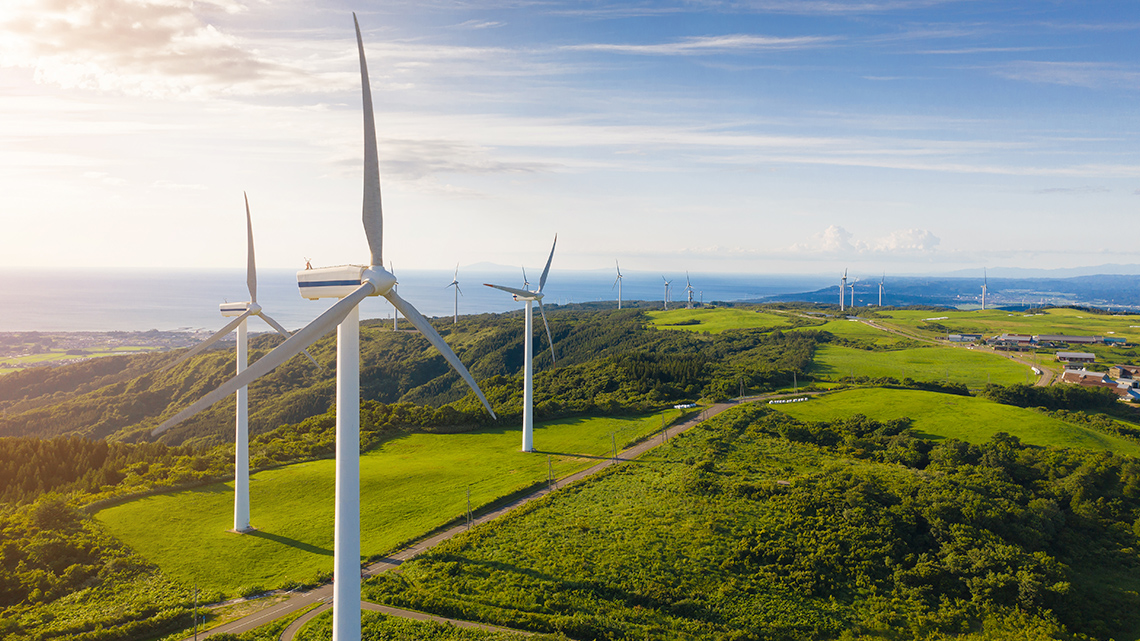
Renewable energy is energy that is created from natural resources, such as wind, water, or sun, that are replenished at an equal or faster rate than which it is being consumed.
Mihskakwan James Harper, an engineer and Indigenous youth advocator from Sturgeon Lake Cree Nation in Treaty 8, Alberta said:
“Indigenous communities, in my opinion, are more likely to pursue clean energy projects mostly because of that overlap of Indigenous ways of life. It’s also a symbolic gesture – not just economically, but even energetically – that within a community, we can sustain our own selves and our own livelihoods without dependence on the Canadian state, utility or big industry.”
Source: Balintec, Vanessa. (2021, Feb 12). Renewable Energy Projects are Powering – and Empowering – Indigenous Communities Across Canada. Ryerson University.
The Great Bear rainforest
One example of an Indigenous initiative is The Great Bear Rainforest in Canada.

Access this video entitled “A Clean Energy Future” to learn more about renewable energy solutions being proposed by the Kitasoo, a First Nation community situated in Klemtu, on the east side of Swindle Island on British Columbia’s central coast.
Pause and Reflect
Pause and reflect
After exploring the video, reflect on the following:
- What are some of the issues that Darren Edgar outlines that his community has faced?
- What are some of the initiatives for clean energy that this community is using or working towards?
Record your responses in a notebook or another method of your choice.
Press ’Let’s Check!’ to access possible responses.
- Darren Edgar mentions that with climate change, this community is not experiencing as much rainfall as usual, resulting in drought. When running on diesel as a backup energy source, there was an oil spill that contaminated their soil and reduced the ability to collect food and fish in that area.
- The main initiative is that the community wants to keep the Great Bear rainforest (one of the most intact forests left) intact for generations to come. One thing they’ve done is add a solar array on top of the school as a clean energy option. They are using education as a tool to inform the community of clean energy options. In the future, Darren hopes that each home will use a small solar array to provide electricity to the home.
Press the following tabs to explore more inspiring initiatives and sustainable energy projects in Ontario.
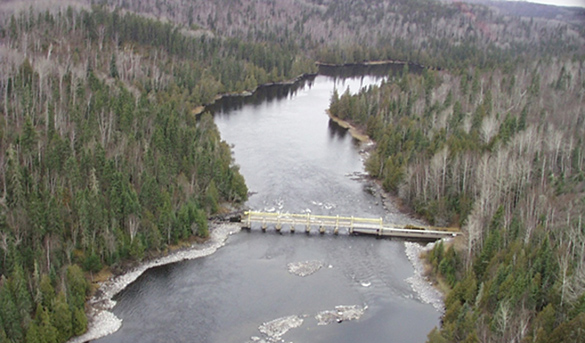
Another inspiring initiative is the Gitchi Animki (White River) hydroelectric project near Wawa, Ontario. It has two generating stations that are fueled by water power. This sustainable project uses natural resources to provide energy to the community and has also created jobs for local people.
Check out this video entitled “White River (Gitchi Animki) Hydroelectric Project” to learn more about this sustainable project.
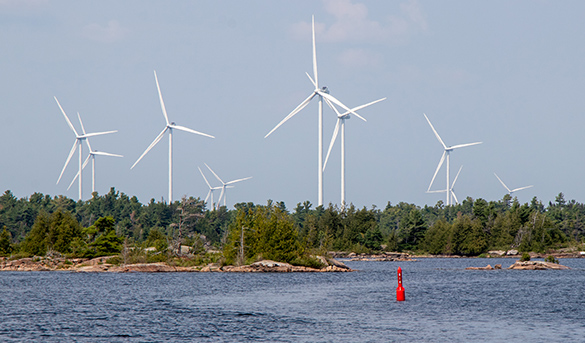
Henvey Inlet First Nation, located between Sudbury and Perry Sound, Ontario, is one of the largest First Nation wind farms in Ontario producing energy to supply the Ontario electrical grid. Wind turns the turbines that generate power that is sent to an underground station, which provides clean, renewable energy to approximately 100,000 homes. It also created a source of jobs for the community and generated funds that are given to support local First Nations businesses.
Learning check!
Reflect on the three inspiring initiatives from Indigenous communities that we previously explored. What are the three clean and sustainable energy methods that they are using to provide electricity for their community?
For each initiative, select the corresponding sustainable energy method.
Press ‘Let’s Check!’ to access the correct answers.
The Great Bear Rainforest initiative uses solar panels, the Gitchi Animki initiative uses hydroelectric dam power, and the Henvey Inlet First Nation uses wind power to generate electricity.
Energy leapfrogging
Energy leapfrogging is when a developing country will “skip over” a less efficient or traditional technology during the course of their development and go directly to the latest technology or explore an alternative emerging technology with new benefits.
One frequent example of leapfrogging is the use of cellular phones. Many developing countries have “skipped over” installing hard-wired telephone landlines and moved directly to offering their populations cellular technology instead. This is often because there are enough resources to build cell towers, but not to build traditional phone lines that are hard-wired to individual homes, businesses, and buildings throughout the country.

The end goal of leapfrogging is that developing countries will consume less energy in this process, and implement renewable energy sources at a faster rate. For many developing countries, making big improvements in access to electricity is linked directly to improvements in education, economic development, and health of its people.
Press the following tabs to explore more examples of energy leapfrogging.
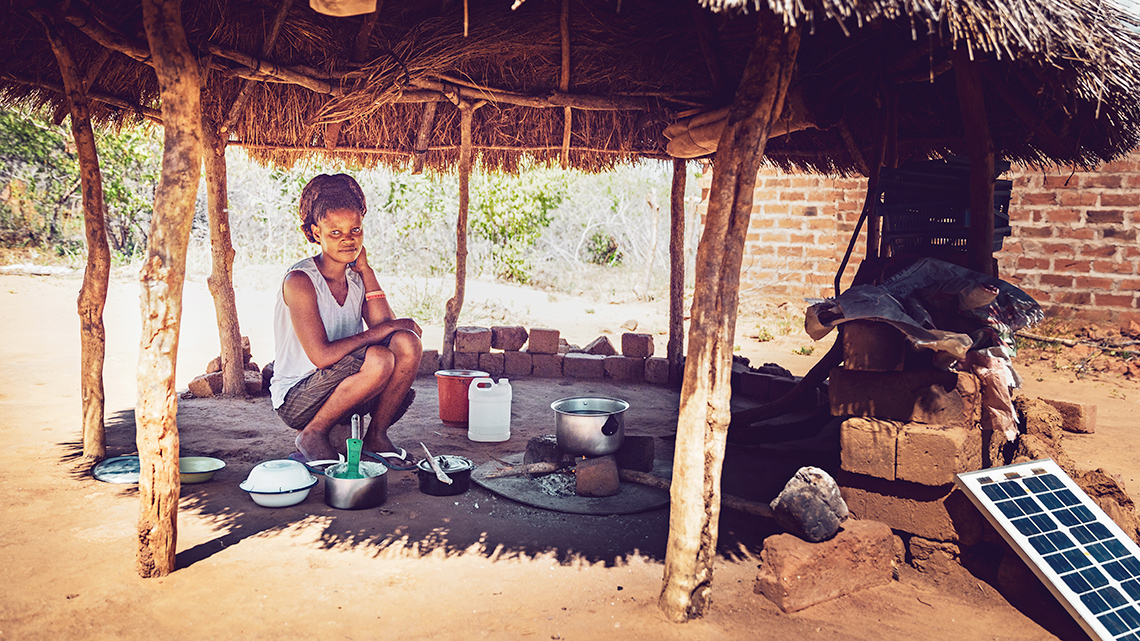
In some countries, people cannot rely on electricity only for cooking.
Many countries, including Africa, have introduced technologies, such as electric cooking, which is powered by solar energy. Solar energy is lower in cost than many fuels that are used for cooking, and has a positive effect on people’s lives. Using solar powered electricity instead of fuel to cook removes the concern of how burning fuels will impact short and long-term health of individuals.

Hydropower, or hydroelectric power, is a renewable energy source that generates electricity using a dam and the natural flow of water. While hydropower is not a new technology, Ethiopia is using it as a clean energy option. They are building the “Grand Resistance Dam” on the Blue Nile River to generate electricity to local residents. Ethiopia has been able to “leapfrog” over the use of coal, specifically burning coal, to create electricity.
Geothermal energy is heat that is within the Earth and is considered a renewable energy source, because heat is continuously produced inside the Earth. Geothermal heat can be used to heat buildings and water, and generate electricity. In Nicaragua, geothermal energy provides 33% of all the electricity produced.
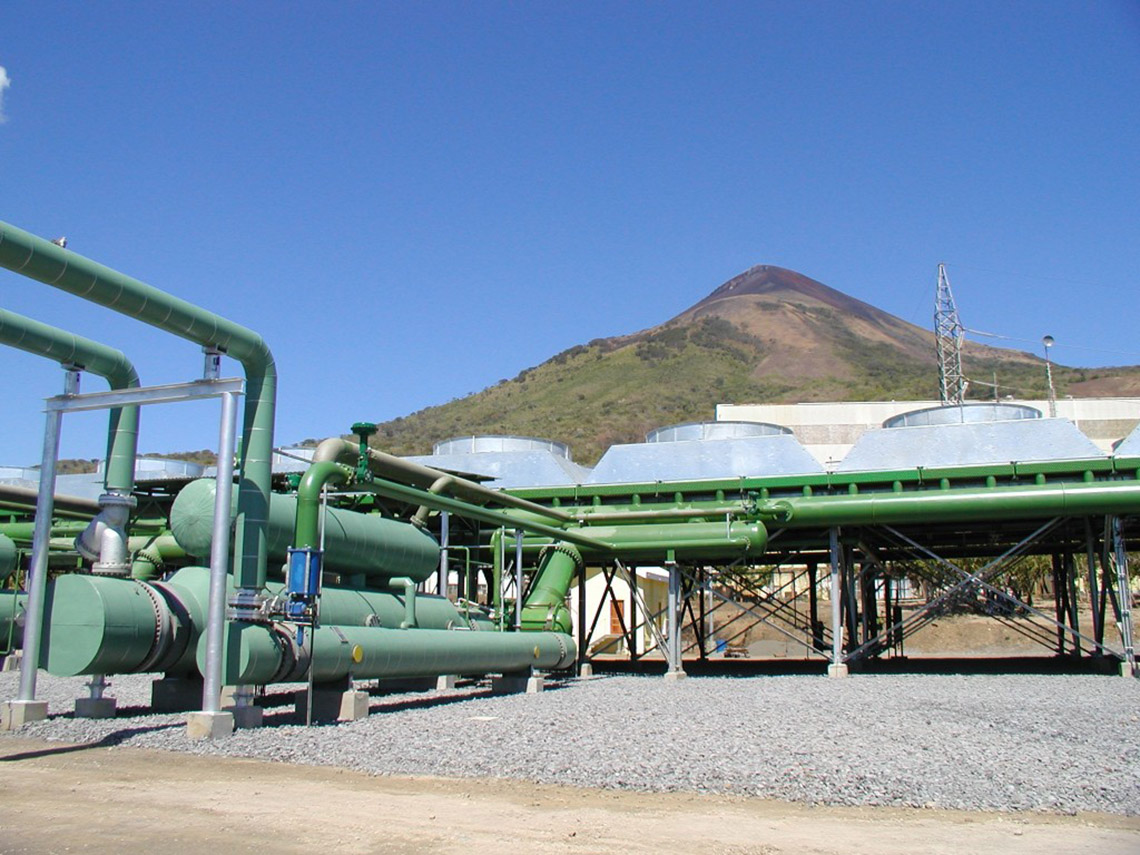
The Momotombo Geothermal Plan in Nicaragua
Student Success
Think!
Consider what it means to “leapfrog energy.”
How is it beneficial to developing countries?
Record your ideas in a notebook or another method of your choice.
If possible, share your ideas with a partner.
Note to teachers: See your teacher guide for collaboration tools, ideas and suggestions.
Consolidation
Review your learning
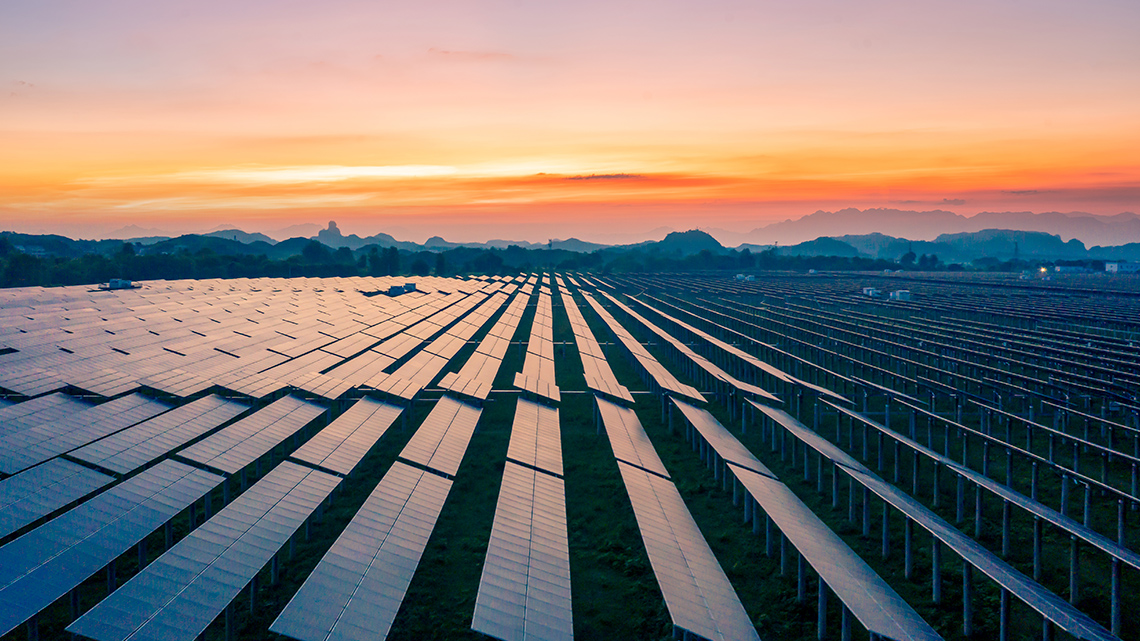
Let’s respond to the following questions:
- What are some of the impacts of having inconsistent, unreliable, or no access to electricity?
- How are Indigenous communities impacted by a lack of reliable electricity?
- What are some of renewable energy options? List as many as you can think of, and then choose one to explain in detail.
Record your responses in a notebook or another method of your choice.
When you’re ready, press ‘Let’s Check!’ to access possible responses.
- Some of the impacts are:
- few options for cooking and producing food
- lack of heat and light
- increased use of chemicals, resulting in pollution and health concerns
- unable to successfully run a business
- Indigenous communities are impacted in various ways. For example, their health, education, local environment, and ability to work. It also impacts their ability to open a new business and build new homes.
- A few options you may have recorded and explained are: solar energy, wind energy, hydroelectric power (dams), geothermal energy, etc.
Advocating for change

Using the information we explored, and your notes from this learning activity, create a letter to the Canadian Government advocating the need for accessible, clean, and renewable electricity for off-grid First Nations, Métis, and Inuit communities.
What arguments could you form to persuade the Canadian government to properly support, fund, and invest in with Indigenous projects? What examples will you use to support your argument?
Complete the “Advocating for Change Letter Activity” in your notebook or using the following fillable and printable document. If you would like, you can use speech-to-text or audio recording tools to record your thoughts.
| Structure | Your Notes |
|---|---|
|
Paragraph 1: Introduce the Problem What have you learned about the impact of unreliable access to electricity on Indigenous communities? How are they impacted? |
|
|
Paragraph 2: Persuasive Argument #1 Describe an innovative solution used by an Indigenous community to generate clean electricity off the grid. |
|
|
Paragraph 3: Persuasive Argument #2 Where else if this happening in the world? For example, what impact is leapfrogging having on communities in developing countries? |
|
|
Paragraph 4: Supporting Research and Ideas What are the benefits of investing in such innovations? Have you done some other research or learning that you would like to inform them the Minister about? |
|
|
Paragraph 5: Solutions What would you like the government do in response to this? |
Press the ‘Activity’ button to access Advocating for Change Letter Activity.
You may also use the following checklist to guide you through this activity.
Self-assessment checklist
Did I…?
When you have completed the first draft of your letter, if possible, share it with a partner or your teacher. You may also ask them to provide you with feedback for improvement.
When you’re ready, create your final copy.
Reflection
As you read through these descriptions, which sentence best describes how you are feeling about your understanding of this learning activity? Press the button that is beside this sentence.
I feel…
Now, record your ideas using a voice recorder, speech-to-text, or writing tool.
Press ‘Discover More’ to extend your skills.
Discover MoreYou will now access the article “The Real Effect of Unreliable Electric Power on Quality of Life.”
This article further outlines some of the challenges that Indigenous communities in Canada experience when they do not have access to reliable electricity.
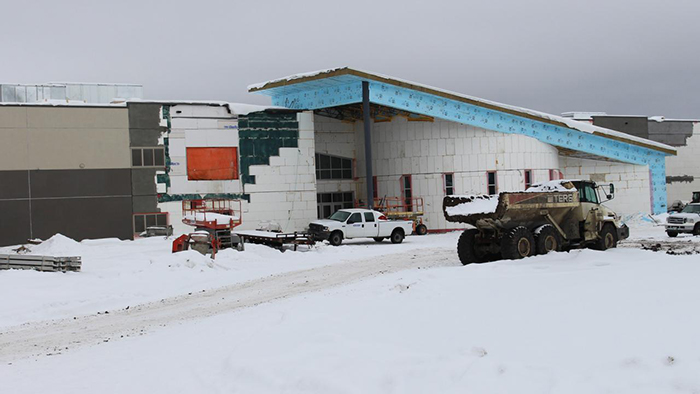
Press tvo today to access The Real Effect of Unreliable Electric Power on Quality of Life.
TVO dot org (Opens in a new tab)